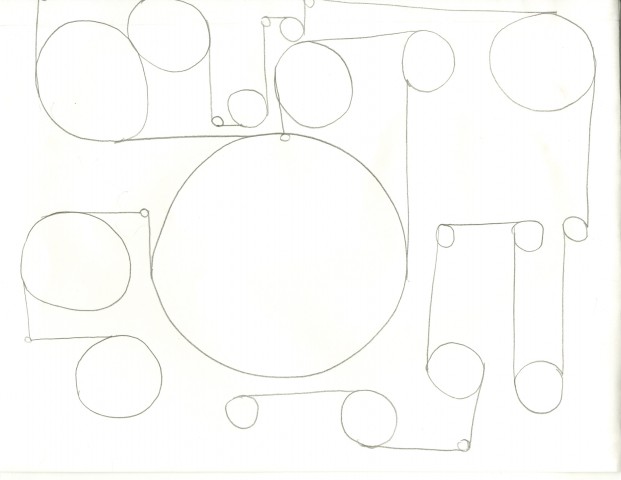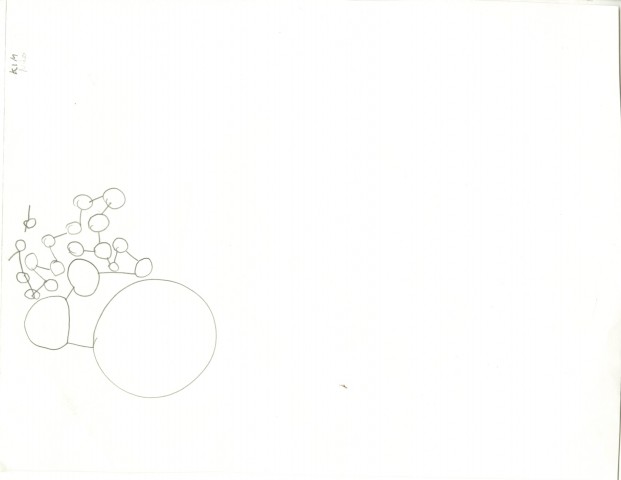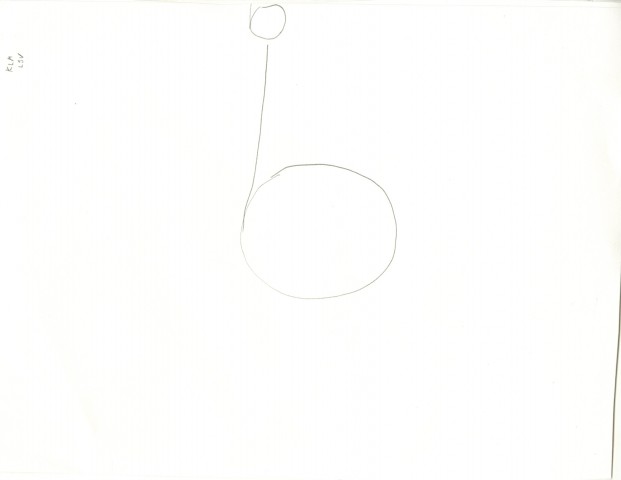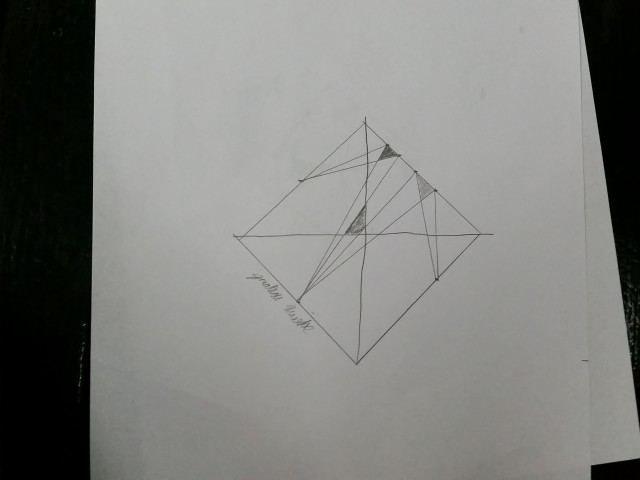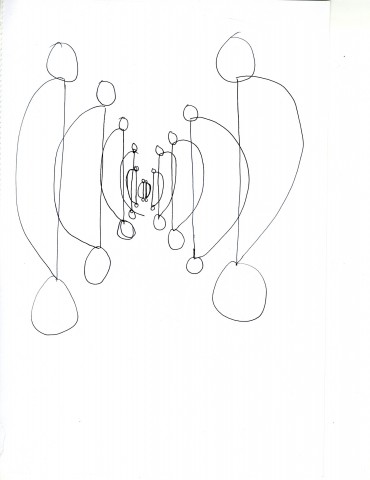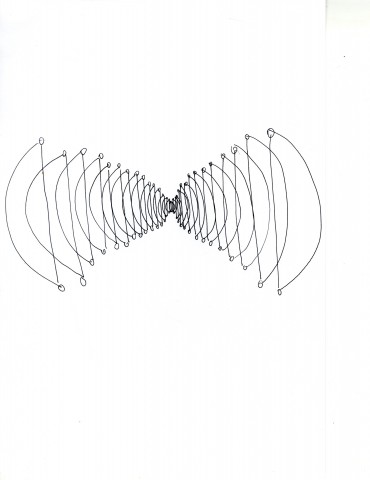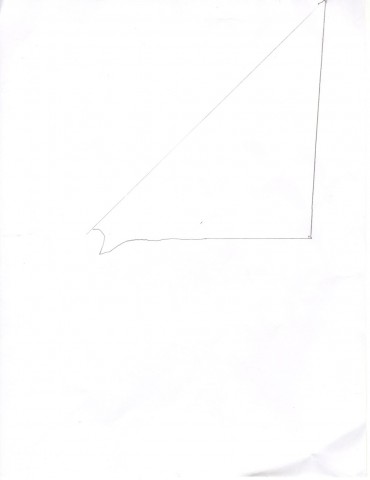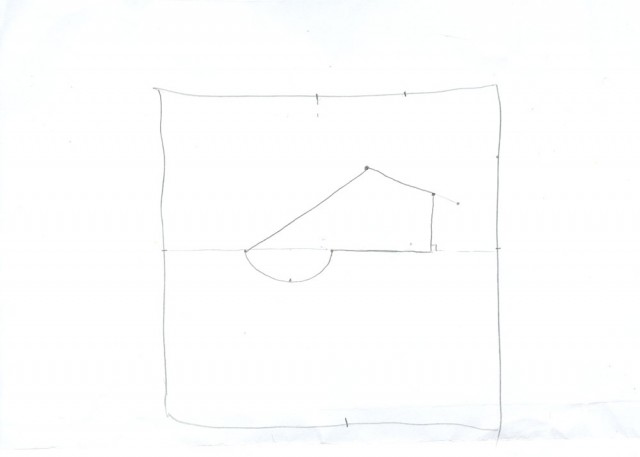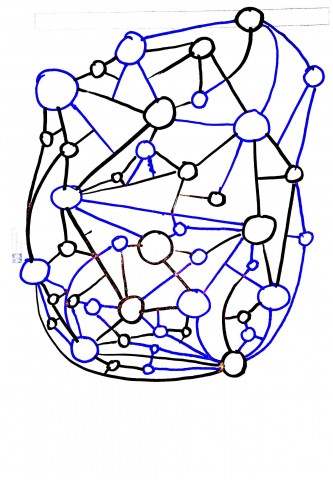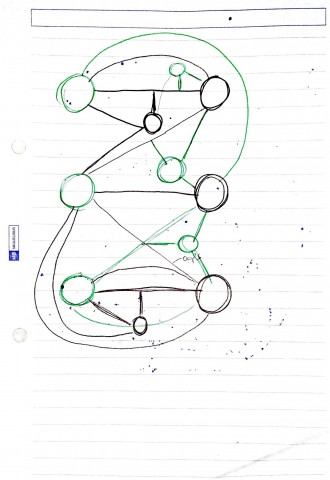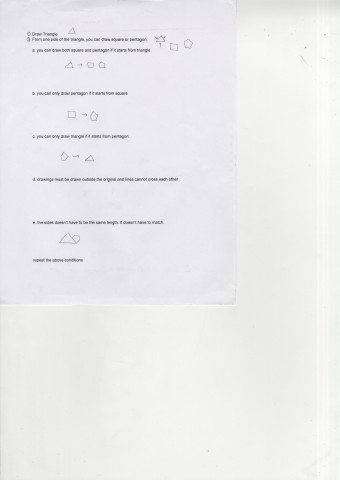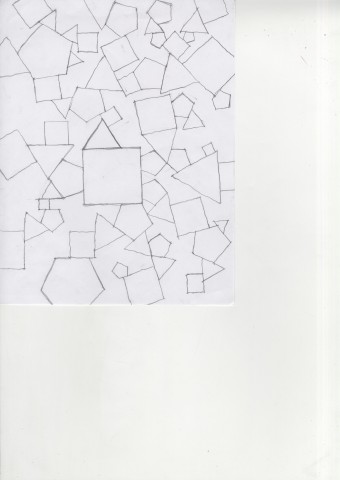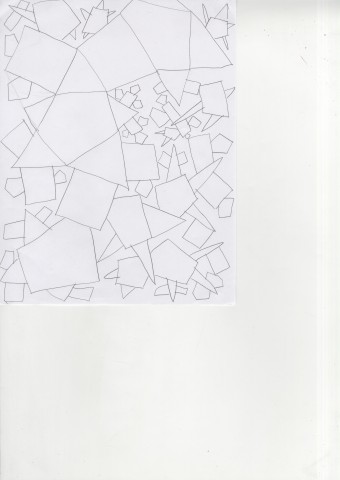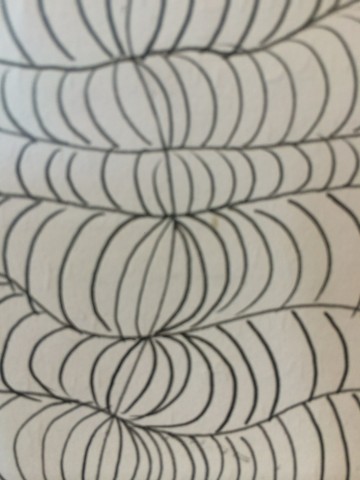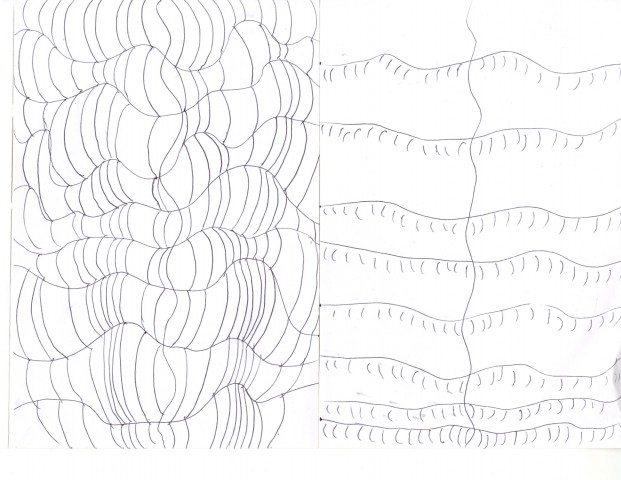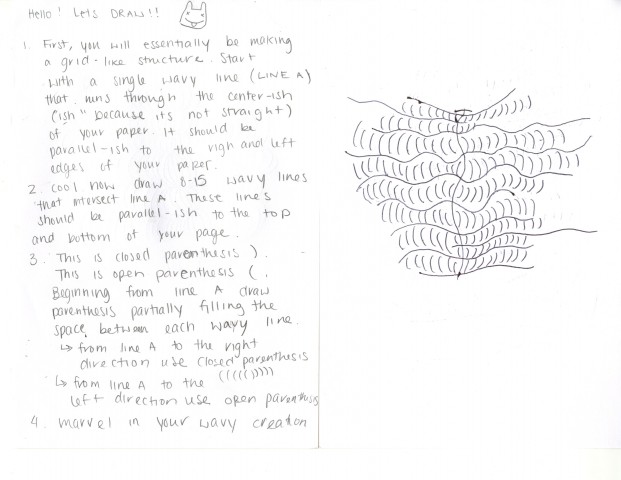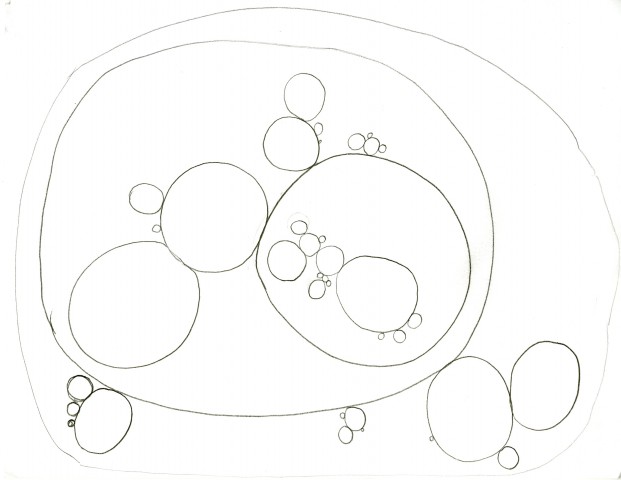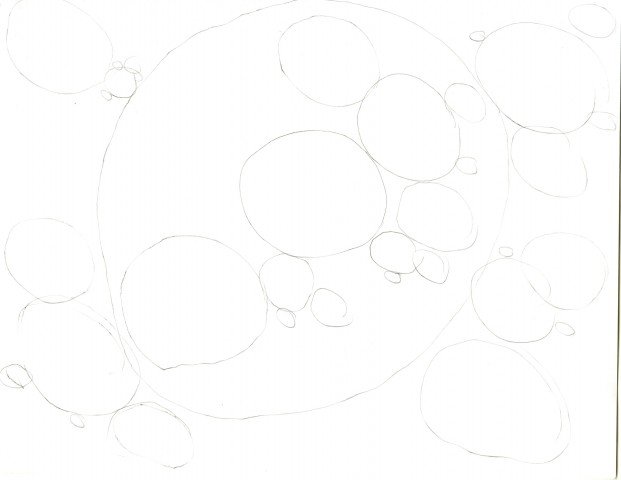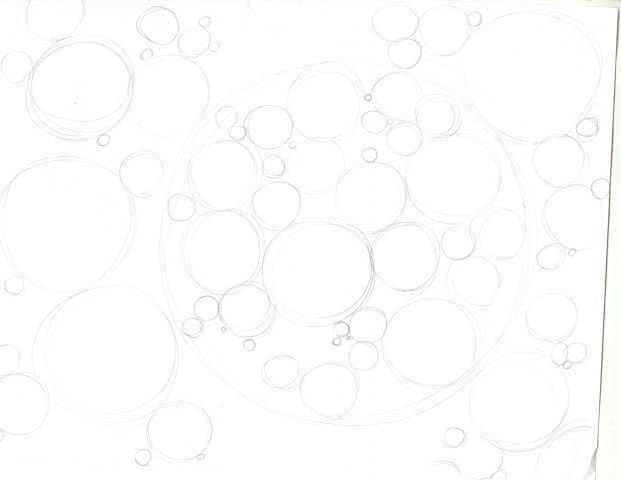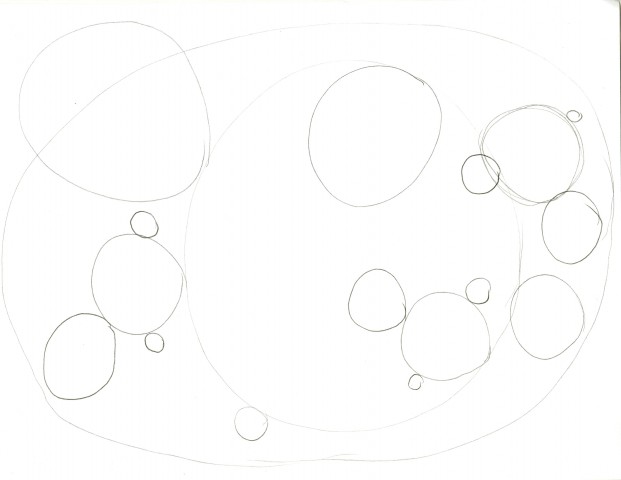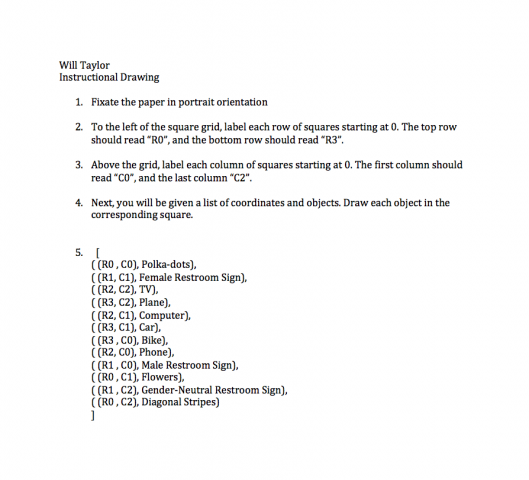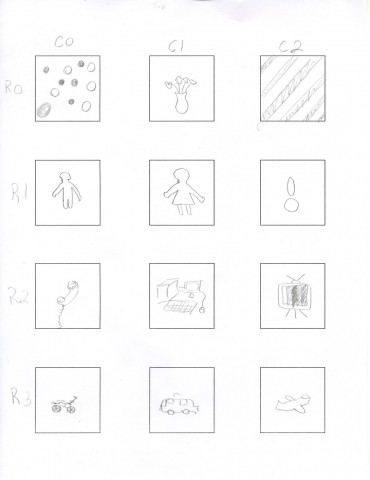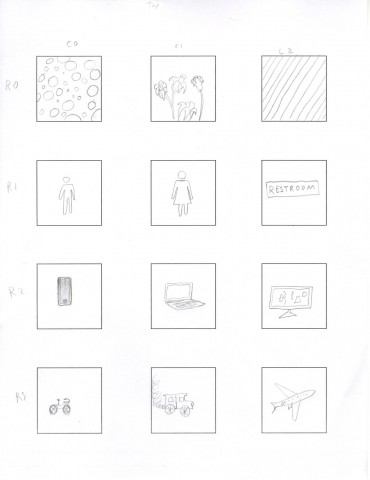My instructional drawing is meant to generate a fractal-like web that connects a set of orbs. It’s inspired by physics simulations, chaos theory, and infinite loops.
The steps are as follows:
1) Imagine the solar system containing the following classical celestial bodies:
- Sol (The Sun)
- Mercury
- Venus
- Earth
- Mars
- Jupiter
- Saturn
2) Begin a simulation in your head of this system. The initial starting point should be a state in which all planets are aligned on the same axis.
3) Run the simulation. Try your best to imitate the intricacies of planetary physics.
4) Stop the simulation after a few hundred rotations of the Earth around the sun.
5) Draw the planets from your simulation in their final positions in a top-down view. Planets should be drawn as circles.
6) Connect the earth to all planets and the sun with a line. Connect Jupiter to all planets except earth.
7) If there are any intersections of these lines, this is the location of a MYSTERY PLANET. Draw them as filled-in circles.
8) Connect the MYSTERY PLANETS to planets that are not already connected to any other MYSTERY PLANETS.
9) Repeat step 7 until no lines can be made, or until there are too many lines to see.
Here are the results:
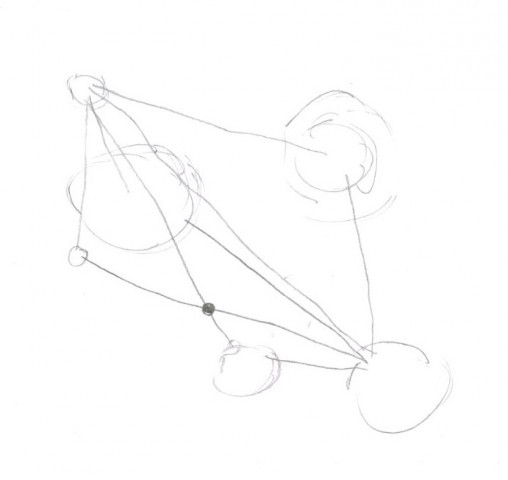
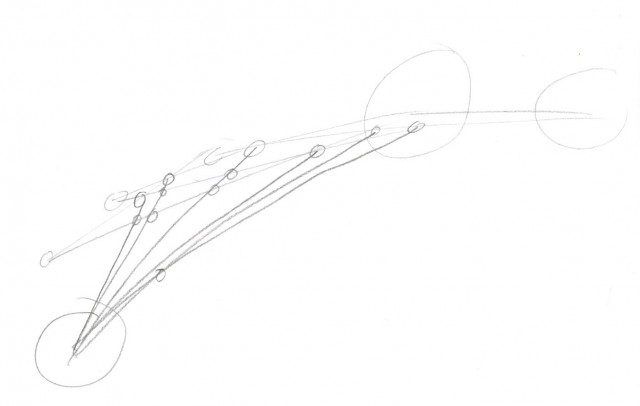
I should have been more specific as to what the planets were supposed to look like – the sun has to be much bigger than the planets, and the lines should have been straighter (I should have required a ruler). Also, depending on where your planets finally ended up, there might not be very many intersections of the lines connecting them, making the “program” end too early and not running enough iterations to make the final image interesting enough. This is what I had in mind for what the drawings were supposed to be (reminiscent of the style of the Pioneer Plaque and the Voyager Golden Record):
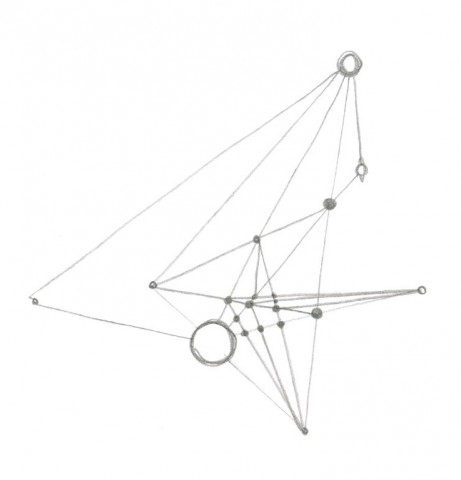
I guess the drawings were a bit successful – the executors of the drawings found it difficult to keep track of the positions of the planets in their heads. This acted as a sort of random number generator and ensures that a never before seen drawing will be generated. Also, I was hoping that someone would run into an infinite loop somehow, but it turns out that infinite loops are impossible unless MYSTERY PLANETS can be connected to other MYSTERY PLANETS.
